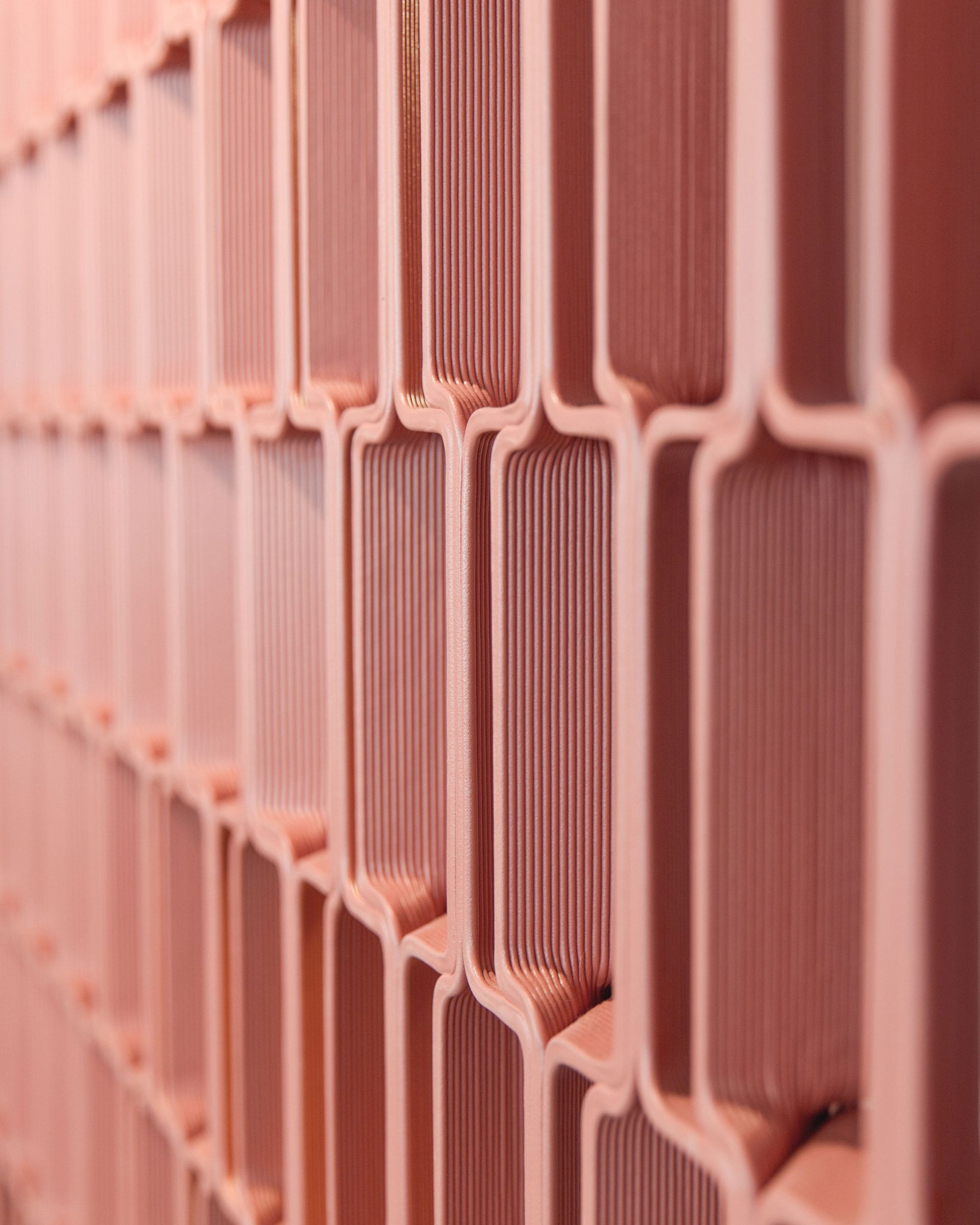
Roos Meeder and Michiel Wijnen are are both interior designers and founders of their respective design studio’s. They designed the interior of the acclaimed Peruvian restaurant Nazka in Amsterdam. Eye-catcher is a large partition screen, developed with Aectual and now part of our collection of screen systems. Roos and Michiel talked with Aectual co-founder Hedwig Heinsman about what informed the distinctive design:
Hi Roos and Michiel, you are both experienced interior architects with a broad portfolio of projects. How did you encounter the Nazka project? And what inspired the design?
RM: I got introduced to Raul, the founder of Nazka, via a mutual acquaintance, and we ended up talking. He had a specific concept in mind and didn’t manage with his interior designer at the time and asked me to jump in. I invited Michiel to collaborate on the project since he has vast expertise in hospitality projects and because we were in a hurry! We then did a quick trajectory of 3 months of designing and three months of refurbishing.
MW: Raul had done his homework thoroughly and had defined four keywords that should characterize the space: Breathiness, Sophistication, Heritage, and Exuberance.
RM: Yes, he positioned the brand well. We translated his keywords into a design and gave it our spin. The interior had to become a stage for vibrant dishes, literally putting the colorful food in the spotlight. Also, the idea of timelessness was important, about the space being relevant for frequent visitors as well as for tourists.
MW: Ultimately, it was also very much about a South American vibe, about warmth, about sharing of dishes, about the team of Nazka as a family.
And why a large 3D printed partition screen?
MW: We were looking for an extra layer between the restaurant and kitchen area. On the one hand, we wanted to maintain openness and a certain level of contact with the kitchen, and at the same time, we tried to conceal the bright lights and noises from the kitchen. So we were looking for a kind of in-between layer. We had loads of different ideas. From glazed tiles to terracotta elements…
RM: We also used terracotta elements in other areas, but the functionality was an issue: if a chair bumps against it, it may crack. We also investigated certain textiles and woven fabrics, but these quickly get dirty and greasy.
MW: Maintenance was one of the criteria which made us choose 3D printing. And the advantage, of course, is that Aectual’s design possibilities gave a lot of creative freedom. The bio-based material we used is tactile and it is relatively lightweight. It is not too perfect, and it has a crafted feeling to it.
What characterizes the functionality of the screen?
RM: The Nazka screen is part of the gradient family, meaning that the cells can gradually open and close. You can fully define the level of openness or closedness yourself to create your unique design, and make it as transparent as you like. The screens can be hung from the ceiling, as we did, and a thicker version can be used as self-standing panels. From every angle, the screen looks different and offers diverse levels of openness or intimacy. It changes the perception of the space around it and triggers your curiosity.
MW: The design, freely inspired by pre-Colombian patterns, has a dynamic rectangular grid and alternating diagonal panes. We like it that the screens, which are so intrinsically characteristic for Nazka, also stand very well on their own and serve beautifully as a room divider or brise soleils, for example.
RM: You can choose from 17 colors or create a custom color. We did extensive research to determine the right color. We wanted to give it a clay-like /pottery feeling that would enhance the outdoor feeling. The color should also be a subtle tone against the pink walls of the restaurant.
The screen is now part of Aectuals collection of configurable systems. What do you think about that?
MW: Well, of course that’s terrific! Originally, I am educated as a product designer, and for a while, I had been thinking of doing a bit more with product design again, and now here it is! I think the screen turned out great.
RM: The timelessness we think is well captured in the design. It can stand on its own; the screen has its own powerful identity that works very well in various spaces. In combination with the material, I think that the design really tickles your curiosity, makes people wonder, and will make them ask questions: is it clay, is it fabric? Which is always a good thing; it’s what makes for an interesting space.
MW: I had been a bit biased about 3D printing, really, but in this case the technology is creating something new and pleasant, and it really made the most sense to use it.
Read here how to create your Gradient . Nazka screen


